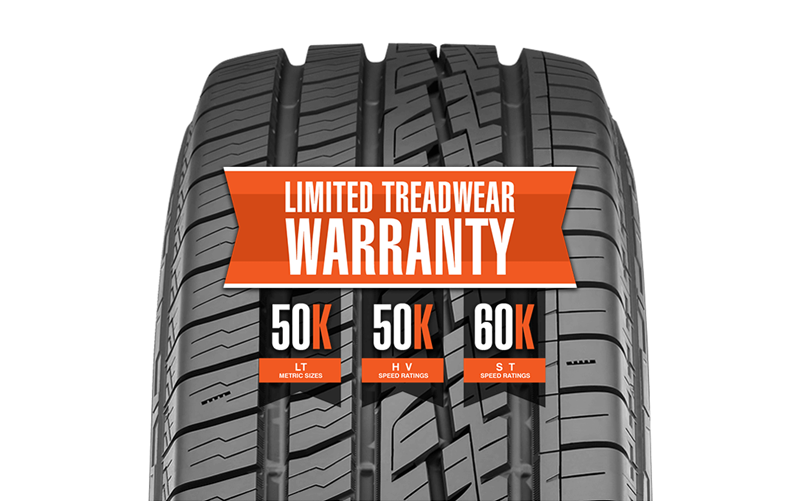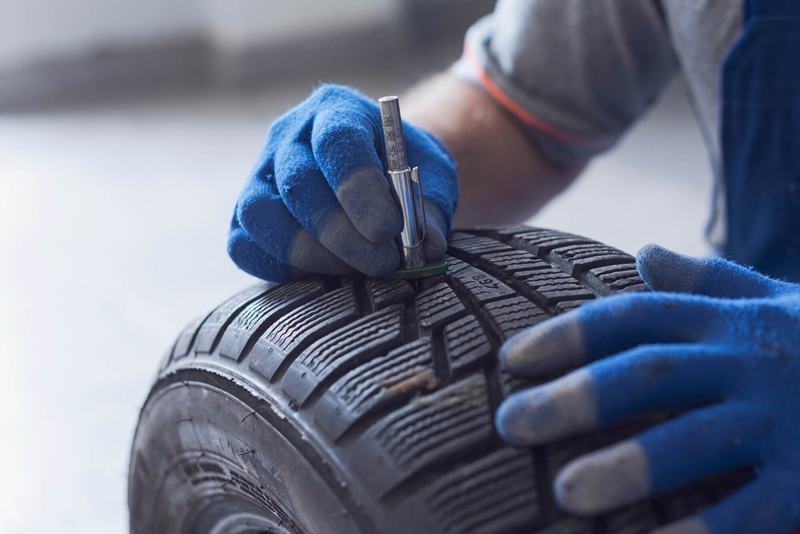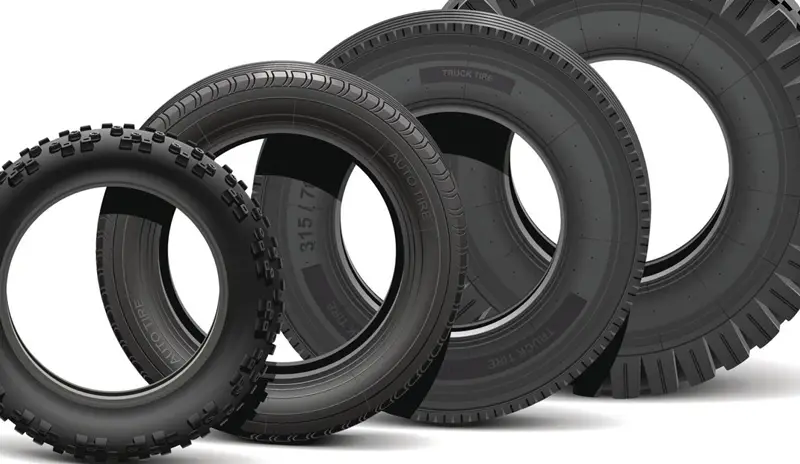When you buy new tires, it’s easy to overlook the warranty paperwork—but you shouldn’t. So, what does the tire warranty cover, exactly? The answer can help you save money and avoid surprises down the road.
Also read: How Often Should I Change My Tires?
Types of Tire Warranties Explained
1. Tread Life Warranty
This is the most common. It guarantees your tires will last a certain number of miles—typically 40,000 to 80,000 miles—if properly maintained. If they wear out earlier, you may be eligible for a pro-rated discount on a new set. Still wondering what does the tire warranty cover? This is often the first place people look.
- What it covers: Tread wear below a specific depth before reaching the mileage limit.
- Common Limits: 40,000 to 90,000 miles depending on the tire type and brand.
- Claim Process: Requires documented tire rotation and alignment records.
2. Workmanship and Materials Warranty
This protects you from defects in manufacturing or materials. If your tire has an internal flaw, like sidewall separation or abnormal vibration, the manufacturer may replace it—often for free in the first year or first 2/32″ of wear.
- What it covers: Sidewall separations, out-of-round tires, internal defects, and premature structural failure.
- Duration: Usually lasts 4–6 years from the date of manufacture or purchase.
- Claim Process: A prorated credit is issued based on the remaining tread depth.
3. Uniformity Warranty
This short-term warranty (usually up to 1 year or first 2/32″ wear) covers issues with ride quality. If the tire causes vibrations or doesn’t roll smoothly, you may get a replacement. If you’re asking, what does the tire warranty cover, this is less known but can be a big help early on.
- What it covers: Poor uniformity or imbalance during early use.
- Duration: Typically valid for the first 2/32” of tread wear or the first year.
- Claim Process: Often includes free replacement if verified early.

4. Road Hazard Protection (Optional)
Some brands or retailers offer this add-on warranty to cover unexpected damage from potholes, nails, or other hazards. This is not included with most standard warranties, so always check before assuming it’s covered.
- What it covers: Punctures, pothole damage, and sidewall cuts.
- Availability: Not all tires or sellers offer this—often sold separately.
- Claim Process: Usually replaced or repaired free during the first 12 months or a specific tread depth range.
5. Satisfaction Guarantee
Many brands offer a 30 to 60-day trial period. If you don’t like the way the tires perform, you can exchange them. It’s a generous policy that fits under the umbrella of what does the tire warranty cover, though it’s more about customer satisfaction than wear or defects.
- What it covers: General dissatisfaction, performance issues, or ride comfort.
- Trial Period: Usually 30 to 60 days.
- Claim Process: Return must be made through the retailer where the purchase was made.
Important Fine Print
- Warranties require proof of regular maintenance (like rotations and alignments)
- Improper use, such as overloading or misalignment, may void the coverage
- You often need to return to the original place of purchase to file a claim
If you’ve ever wondered, what does the tire warranty cover, the answer depends on the type of warranty you’re dealing with. From basic defect protection to optional road hazard coverage, understanding your warranty options helps you make informed decisions—and potentially save money down the road.

What Does the Tire Warranty Cover?
If you’ve ever bought new tires and been handed a warranty, you might have wondered—what does the tire warranty cover, exactly? While it can vary by brand and tire type, most tire warranties offer coverage in a few core areas:
1. Manufacturer Defects
This is the most basic part of the warranty. If your tire has a defect in materials or workmanship, it may be eligible for free replacement or a prorated refund. For example, if a tire develops sidewall bubbles or irregular tread separation due to faulty manufacturing, the warranty should kick in.
2. Treadwear Mileage
Many tires come with a tread life warranty, promising they’ll last a certain number of miles—commonly between 40,000 and 80,000 miles. If the tread wears out faster than advertised (and you’ve maintained the tires properly), you might get a partial credit toward a new set. This is one of the most common areas where people ask, what does the tire warranty cover?
3. Road Hazard Protection (Optional)
Some warranties also offer road hazard coverage, which protects against flats or blowouts caused by potholes, nails, glass, and other road debris. This is usually an optional upgrade or included in premium protection plans.
4. Uniformity Warranty
This covers issues like excessive vibration or imbalance that results from an issue in the tire’s shape or construction. It’s typically available for the first year or the first 2/32″ of tread wear.
5. Satisfaction Guarantee
Some tire brands offer a trial period—usually 30 to 45 days—where you can return the tires if you’re unhappy with their performance. This is more of a customer service perk but still falls under the umbrella of what the tire warranty covers in the early ownership period.

What’s Not Covered In The Tire Warranty
While many buyers focus on what does the tire warranty cover, it’s just as crucial to know what isn’t included. Tire warranties have clear limitations, and overlooking them can lead to denied claims.
Here are the most common exclusions:
- Improper Maintenance – Failing to rotate your tires, check alignment, or maintain correct air pressure can void your warranty.
- Irregular or Uneven Wear – If tires wear down unevenly due to suspension issues or neglect, the warranty typically won’t apply.
- Damage from Road Hazards – Unless you specifically purchased road hazard protection, flats from potholes, nails, or debris usually aren’t covered.
- Cosmetic or Environmental Damage – Cracks from UV exposure, ozone damage, sidewall abrasions, or staining are generally not included in what the tire warranty covers.
- Accidental or Intentional Damage – Running over a curb, using your tires for racing, or damage caused by accidents isn’t covered.
Understanding these exclusions is key when asking, what does the tire warranty cover, because many claims are denied due to these exact scenarios.

Tips to Keep Your Warranty Valid
To get the most from your warranty, you need to take proactive steps. When asking what does the tire warranty cover, remember: it only applies if you follow proper maintenance and usage guidelines.
Here’s how to keep your coverage intact:
- Document Everything – Keep records of tire rotations, alignments, pressure checks, and inspections.
- Rotate Tires on Schedule – Follow your manufacturer’s recommended interval (usually every 5,000 to 8,000 miles).
- Maintain Correct Tire Pressure – Check monthly and keep inflation within manufacturer specs.
- Check Alignment Regularly – Misalignment leads to uneven wear, which voids many warranties.
- Avoid Overloading Your Vehicle – Exceeding the weight limit causes stress and damage not covered under most warranties.
- Keep the Original Receipt – Proof of purchase is usually required for any claim related to what the tire warranty covers.
By staying on top of these small maintenance tasks, you’ll extend the life of your tires and ensure you can use your warranty if needed.
Tire Warranty Comparison Table
| Brand | Tread Life Warranty | Road Hazard Coverage | Other Coverage & Notes |
|---|---|---|---|
| Michelin | Up to 80,000 miles | No (optional via retailer) | 6-year materials/workmanship warranty; 60-day satisfaction guarantee |
| Goodyear | Up to 85,000 miles | Yes (on select tires) | 12-month road hazard on some models; 30-day test drive |
| Bridgestone | Up to 80,000 miles | No (available from some retailers) | 3-year materials/workmanship; 90-day buy & try guarantee |
| Continental | Up to 70,000 miles | Yes (on many models) | 3-year flat tire change assistance; 60-day trial |
| Pirelli | Up to 65,000 miles | Limited (retailer-based) | 30-day satisfaction guarantee; performance-focused warranty terms |
| Firestone | Up to 70,000 miles | No (retailer optional) | 90-day buy & try guarantee; materials/workmanship warranty included |
Tips to Keep Your Tire Warranty Valid
Understanding what does the tire warranty cover is only half the equation—keeping that warranty valid requires a few smart habits. Here are 10 tips to make sure you’re always protected:
1. Register Your Tires
After purchase, always register your tires with the manufacturer. This step ensures your coverage is active and that you’re alerted to recalls—which is a key part of what does the tire warranty cover.
2. Save Your Receipt
Keep a copy of your sales receipt or invoice. You’ll need it to prove the purchase date and qualify for warranty benefits.
3. Follow Maintenance Guidelines
Rotate your tires every 5,000–8,000 miles, maintain proper pressure, and check alignment regularly. Most manufacturers outline these as conditions for warranty eligibility—and they’re part of what does the tire warranty cover.
4. Avoid Abnormal Wear
Drive carefully and avoid curbs, potholes, or overloading your vehicle. Damage caused by misuse or neglect is typically not included in what does the tire warranty cover.
5. Inspect Tires Regularly
Check for uneven tread wear, punctures, cracks, or sidewall damage. Noticing issues early can help prevent disqualification from warranty coverage.
6. Don’t Modify Your Vehicle
Oversized wheels, altered suspensions, or aggressive customizations can cause wear patterns that invalidate your warranty.
7. Respect Seasonal Usage
Use winter tires in the winter and switch to all-season or summer tires as conditions change. Using tires outside their intended season isn’t usually part of what does the tire warranty cover.
8. Maintain Load Limits
Never exceed the manufacturer’s recommended weight capacity. Overloading can void the warranty due to excessive stress on the tires.
9. Fix Mechanical Issues Promptly
Issues like poor alignment or suspension damage can cause abnormal wear—which is often not covered under standard warranties.
10. Submit Claims Promptly
If your tire fails, act quickly. Warranties often have specific timelines for filing claims, which fall under what does the tire warranty cover.
Tire Warranty Comparison Chart
| Category | Details |
|---|---|
| What Does the Tire Warranty Cover |
– Manufacturing defects (materials & workmanship) – Treadwear mileage (within specified limits) – Road hazard (only if added coverage is purchased) |
| What’s Not Covered |
– Improper maintenance (e.g., skipped rotations) – Road hazard damage (unless optional coverage applies) – Uneven or irregular wear – Cosmetic or environmental damage – Damage from accidents or racing |
| Tips to Keep Your Warranty Valid |
– Rotate tires every 5,000–8,000 miles – Maintain proper air pressure monthly – Check alignment regularly – Keep records and receipts – Avoid overloading the vehicle – Drive responsibly |
How to Make a Warranty Claim: Step-by-Step Instructions (Introduction)
Tires are one of the most important components of your vehicle, impacting everything from safety to fuel efficiency. That’s why many tire manufacturers back their products with warranties. But knowing how to make a warranty claim is just as important as knowing what your warranty covers. Unfortunately, many drivers miss out on warranty benefits simply because they don’t understand the process. That’s where this guide comes in.
Whether you’re dealing with premature wear, sidewall defects, or a tire that didn’t last nearly as long as advertised, learning how to make a warranty claim can help you recover some or all of your tire replacement costs. While each tire manufacturer may have slightly different procedures, the core steps are usually the same — and surprisingly straightforward when broken down.

So, why is it important to know how to make a warranty claim? Because tire warranties often come with certain conditions and requirements. If you’re not keeping records or performing routine maintenance like rotations and pressure checks, your claim could be denied — even if the tire is clearly defective. By preparing in advance and understanding the documentation required, you’ll improve your chances of a smooth and successful claim.
In the sections that follow, we’ll explain exactly how to make a warranty claim in a clear, easy-to-follow, step-by-step format. Whether you’re dealing with a workmanship defect or a mileage warranty issue, this guide is designed to help you confidently navigate the process. From gathering proof of purchase to knowing what to say when speaking with a tire dealer, we’ve got you covered.
Let’s take the guesswork out of warranty claims. Follow this practical guide so you know how to make a warranty claim and get the most value from your tires — because peace of mind should always come with a good set of wheels.
Tire Warranty FAQ: What You Need to Know
-
What does the tire warranty cover?
In most cases, what does the tire warranty cover includes manufacturing defects, premature tread wear, and road hazard damage (if specified in the plan). Some warranties also include free tire replacement or prorated credit depending on how much tread is left when the issue occurs.
-
Are tire warranties transferable to a new owner?
Some are, but it depends on the brand. Always check the fine print. If it is transferable, make sure the new owner has proof of purchase and maintenance records.
-
Does my warranty cover nail punctures or pothole damage?
Usually no, unless you’ve purchased a road hazard warranty, which is a separate plan. Standard warranties focus on what does the tire warranty cover regarding manufacturing defects, not external damage.
-
Is tread wear always covered?
Not always. Treadwear warranties have mileage guarantees but come with strict maintenance requirements. If you didn’t rotate your tires or keep proper inflation, the warranty might not apply—even if you’re under the mileage limit.
-
How do I file a tire warranty claim?
Visit the shop where you purchased the tires or contact the manufacturer. Bring your proof of purchase, maintenance records, and photos of the damage or wear. This helps determine what does the tire warranty cover in your situation.
-
Does the warranty reset when I replace a tire under coverage?
No. Replacements under warranty are typically prorated and do not reset your coverage period. Always confirm the details in the warranty terms.
Need a mobile mechanic? Find one on the Mobile Mechanic Directory
Final Thoughts
So, what does the tire warranty cover? It’s more than just a piece of paper tucked into your glovebox—it’s a safety net that can save you from costly surprises. In general, tire warranties protect against manufacturing defects, premature treadwear, and sometimes even road hazard damage. But knowing what does the tire warranty cover also means understanding what it doesn’t cover—like damage from poor maintenance, improper inflation, or accidents.
A tire warranty only works if you do your part. That includes keeping up with tire rotations, maintaining proper air pressure, and saving all your service records. If your tires wear out faster than expected or develop issues, those records are often the key to a successful claim.
So, what does the tire warranty cover when you’ve done everything right? In many cases, a free or discounted replacement tire—or at the very least, credit toward a new set. Staying on top of your tire care and understanding the terms of your warranty will help you get the most out of it.
At the end of the day, a tire warranty is about peace of mind. It’s one more way to protect your investment—and keep you rolling safely down the road.





